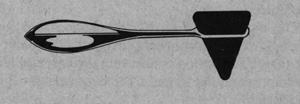Tweezers
The most frequently used item in my black bag.
Get a good pair and don't use them for tightening screws, etc. There's nothing more infuriating than having a sobbing child stretched out across the couch with a splinter in his or her foot, and discovering that your tweezers don't quite come together. Keep them dry and in their case.
For tiny splinters I use a pocket magnifier I bought in a photo shop for seventy-five cents. Tweezers are available in most drugstores.

Thermometer
About two dollars in any drugstore. Always clean your thermometer with cold water—hot water may break it. Use an oral thermometer for adults and children, rectal for infants. (Always use a lubricant with a rectal thermometer.)
Remember that your temperature goes up after exercising and, in women, immediately after ovulation.
The oral thermometer should be placed under the tongue for at least three minutes. The person shouldn't have just had anything to eat or drink.
Most doctors don't consider a temperature under 100° F a fever.

Stethoscope
Five dollars and up from your local hospital or medical supply store, Sears, Wards, your local med school bookstore, or through your local druggist. Edmund Scientific is another good mail-order source (Barrington, NJ 08007).
Get one with a diaphragm—a round, flat disk—on the end, which is more useful than the hollow, bell-shaped chestpiece.
The earpieces of most stethoscopes are set at an angle. Put them in your ears so that the tips point toward the front. The spring connecting the two earpieces can be bent in and out to make the earpieces fit snugly but comfortably. Stethoscopes are good for listening to hearts, lungs, and abdomens, and for taking blood pressures.
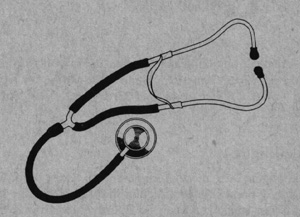
Tongue Blades
Available at hospital supply stores. Usually it's not necessary to use anything to hold the tongue down at all. Try asking the person to open his or her mouth wide and pant in and out like a dog.
In a pinch, use the handle of a clean spoon.
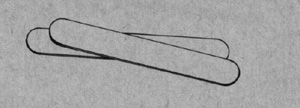
Blood Pressure Cuff
These run about twenty-five dollars and up. A few drugstores are beginning to carry kits with stethoscopes and blood pressure cuffs. (You need both to take a blood pressure.)
Cuffs come in two types—mercury column and dial (shown). The mercury models are unnecessarily cumbersome and expensive. The dial models are handier and work fine—though they should be checked against a doctor's for accuracy.
Emotional factors (like being at the doctor's office) can cause your blood pressure to shoot up, so blood pressures should always be taken when the person is comfortable and relaxed.
Fifteen percent of the population has high blood pressure. If you buy a cuff and routinely check blood pressures on your friends, you'll be pretty certain to be doing some of them a bin favor.
A booklet on taking a blood pressure is available free from your local American Heart Association, or from the National Office at 44 East 23rd Street, New York, NY 10010.

Flashlight
Penlights are more convenient to carry and for checking pupil size than regular flashlights, but the big lights last longer and can do double duty around the house or when you go camping. Regular flashlights are better for looking into throats, the thing they'll probably be used for most.
They are useful, too, for examining noses, looking in eyes for foreign matter, providing light while removing splinters, and finding dropped contact lenses. (Turn the room lights off end shine the flashlight across the floor. The lens will make a tiny shadow.)
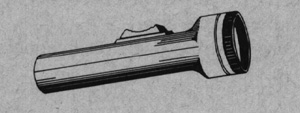
Otoscope
Recommended for homes with children, or for adults with recurring ear infections. The Well Body Book recommends a fifty-cent ear speculum with a flashlight, but 1 have a hard time seeing anything this way. A battery-in-the-handle model costs thirty dollars or more.
This is an instrument to be used very carefully by people with steady hands. I'd recommend learning to use one from an experienced clinician, not a book.
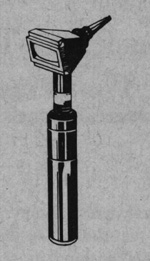
Vaginal Speculum
Used increasingly by women for self-examination with a hand mirror. Ask your nurse or midwife to show you how, or make an educational appointment with your gynecologist—go with a friend and have the doctor show you how to do a pelvic exam on each other.
See Carol Berry's article, "Doing Your Own Vaginal Self-Exam" (page 281), for more details. See also Our Bodies, Ourselves (reviewed on page 292), and the listings under gynecology in Anne Simons' article, "Medical Textbooks I Have Known" (page 89). Whatever you do, use this (and all instruments) gently.
Available from hospital and medical supply houses and some drug stores.

Reflex Hammer
A reflex hammer is rarely medically necessary— unless someone in your household has a neurological disease—but it is lots of fun and highly educational to use. About five dollars at medical supply houses.
